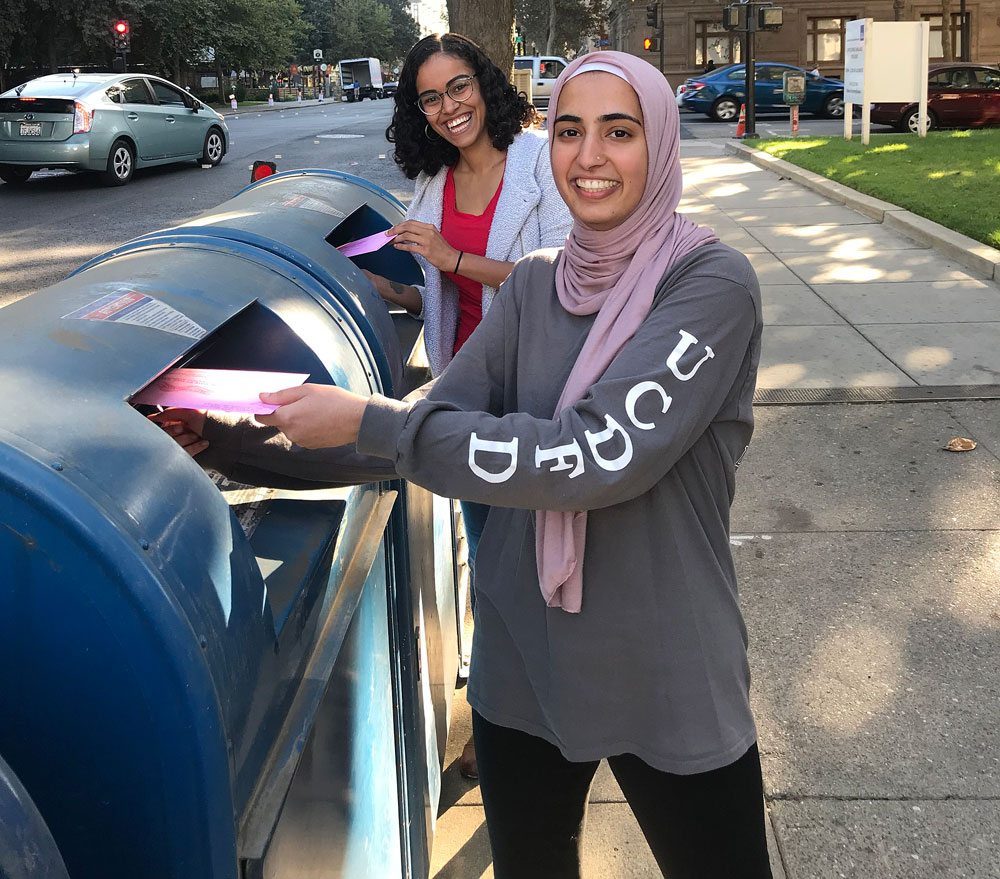
November 3, 2020; ProPublica, New York Times, and CNBC
“Stay safe and stay home.” No, this was not the latest public health campaign. But, according to ProPublica, three million Americans received these calls on Election Day, including 798,000 in Texas, 534,000 in Florida, 93,000 in Pennsylvania, 89,000 in Michigan, and 60,000 in North Carolina. The goal was to dissuade voting, an ugly American tradition, as James Rainey noted in the Los Angeles Times just a couple of weeks ago.
Yet, by and large, voter suppression tactics like these did not work. In fact, the US had record high turnout. According to CNBC, turnout this year is likely to total 159.8 million people out of an estimated 239.2 million eligible voters. If this estimate proves correct, that would work out to 66.8 percent of eligible voters, the nation’s highest turnout since 1900.
These voters can be divided—roughly, these are still estimated figures—into three groups:
- Voted by mail: 63.9 million
- Voted early in person: 35.7 million
- Voted on Election Day: 60.4 million
An article in the journal Foreign Policy notes that a turnout in the mid-60s percentage-wise comes out only around the middle of the pack in international perspective. However, the US turnout appears far more remarkable when one considers that US voters face considerably greater obstacles to casting a ballot than do voters in other countries.
Just last month, we profiled a number of the tactics used to discourage voting in Texas, including purging of voting rolls, voter ID laws, and efforts to limit the number of polling locations. Also this year, in Florida, after more than one million former felons won the right to vote in a statewide voter referendum in 2018, that vote was stripped away by court decisions.
Sign up for our free newsletters
Subscribe to NPQ's newsletters to have our top stories delivered directly to your inbox.
By signing up, you agree to our privacy policy and terms of use, and to receive messages from NPQ and our partners.
One of the most powerful barriers to voting, however, is one of the most seemingly mundane—so mundane that most Americans don’t even think of it as a voter suppression tactic, which is that, unlike in most countries, you must register to vote.
In the 2016 elections, Pew Research Center reports that only 70 percent of eligible voters had registered to vote. As Drew DeSilver at Pew explains, “In many countries, the national government takes the lead in getting people’s names on the rolls—whether by registering them automatically once they become eligible (as in, for example, Sweden or Germany) or by aggressively seeking out and registering eligible voters (as in the UK and Australia). As a result, turnout looks pretty similar regardless of whether you’re looking at voting-age population or registered voters.” Not so in the US. In 2016, an estimated 86.8 percent of US registered voters went to the polls, but only 58.7 percent those eligible to vote did so.
Earlier this year, before the pandemic hit, NPQ noted that if it were easier to vote, many more people in the US would be likely to cast a ballot, citing the work of University of Memphis law professor Steve Mulroy, who compared Australian election practices with US practices. Some differences include:
- In Australia, voting is compulsory, enforced by a token AU$20 fine (about $14).
- Australian elections avoid the issue of “throwaway” votes through practices such as ranked-choice voting—now used in Maine—and proportional representation.
- District lines are set by independent electoral commission (i.e., no gerrymandering).
- Anyone can choose to vote by mail or in person.
Here, it is important to note that because of the pandemic, for the first time, that last item of no-excuses vote by mail existed in most, albeit not all, states, and an estimated 63.9 million Americans took advantage of the option. Same-day voter registration has also become more common since 2016, with Maryland, Michigan, Nevada, New Mexico, Utah, and Washington all passing relevant enabling legislation between 2016 and 2020. Studies show that this tends to boost turnout by about five percent, according to the National Conference of State Legislatures.
Certainly, two principal drivers for this year’s high turnout were campaign mobilization efforts and the high stakes of an election held amid a deadly pandemic, economic distress, and a national racial justice uprising. Increased voting was not the result of new rules alone. That said, it seems pretty clear that changing the rules to make it easier to vote resulted in significantly higher voter participation. This is an achievement—and perhaps is one lesson from the pandemic that can be built upon in post-pandemic times.—Steve Dubb











